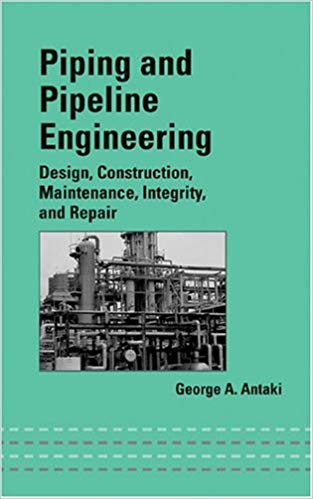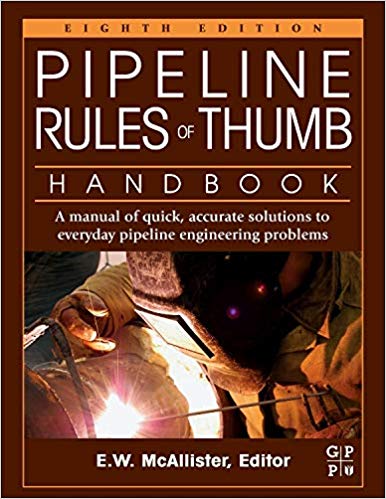Test Pressure and Temperature
Per the API RP 2201, conduct a hydrostatic test at a pressure at least equal to the operating pressure of the piping to be tapped, but not exceeding the present internal pressure by more than approximately 10% in order to avoid possible internal collapse of the pipe wall. If there exist conditions that could cause collapse of the pipe wall, the test pressure can be reduced. If a hydrostatic test is not practical, then a pneumatic test may be performed, using the common precautions. Note that header walls can collapse during testing if insufficient internal operating pressure or excessive external hydrostatic pressure is applied. This is especially true for large diameter piping and pipelines.
The test pressure can be limited if necessary to prevent shell buckling because of differential external pressure between the outside and inside pipe wall being hot tapped. This is accomplished by either a reduction in the test pressure from that calculated using the applicable code rules or an increase in the pipe internal pressure.
Shown in Figure 7-3 is a hot tap nozzle welded to pipe with external load (hydrostatic test pressure). It shows the two different configurations for the nozzle connection—a welded fitting or a saddle and a full encirclement sleeve. Shown in the weld configurations, the hydrostatic test pressure is contained within the confines of the inside of the nozzle wall. If the hydrostatic test water leaks through one of the welds, then that would be a hydrostatic test failure. A more graphic detail of the typical 90° nozzle connection is shown in Figure 7-4.
Figure 7-3. Hot tap nozzle welded to a pipe with external load on the pipe wall during hydrostatic test.
Figure 7-4. Typical 90° nozzle connection.
The maximum pressure required to buckle the shell wall consists of a curved plate clamped at the edges. This situation is for a saddle or reinforcing pad assembly that does not encompass the entire circumference of the pipe. This problem of elastic stability was first solved by E. I. Nicolai in St. Petersburg in 1918, cited in Timoshenko and Gere, Theory of Elastic Stability [Reference 3]. The buckling pressure is in the following form:
This particular case is in Roark's 7th edition, Table 15.2 Case 21 [Reference 4].
Curved panels under uniform loading were a topic of great interest in Russia, where it snows heavily during the blizzard winters. As the story goes, whenever snow loads would build up, a curved roof sometimes would collapse. Consequently, interest to solve the problem stimulated a formal analytical solution, shown above.
As seen in Figure 7-3, the hot tap connection can be either a saddle or full encirclement sleeve. The latter type is shown in more detail in Figure 7-5.
Figure 7-5. A full encirclement sleeve for hot tap installation.
Courtesy of ExxonMobil, Inc.
The hydrostatic test pressure is assessed as in the ASME Section VIII Division 1 code for external pressure on a cylindrical shell. The assessment uses the A and B values in the ASME Section II Part D curves for the material considered. Before any component is welded, be it a saddle, reinforcing pad, or a full encirclement sleeve, an NDE such as UT needs to be performed to certify that the remaining wall thickness on the pipe is substantial enough to have hot work performed. If the pipe has an LTA (see Chapter 3) and a sleeve is to be welded on, the pipe is no longer of uniform thickness, and the assessment in the ASME Section VIII Division 1 for external pressure is not valid. For a pipe with an LTA, a buckling assessment using finite element is required to find the critical buckling pressure. Normally, it is accepted practice not to perform hot taps close to corroded regions to avoid this situation; however, this event cannot always be avoided.
Typical nonperpendicular nozzle hot tap connections used for pipe sizes 3 in. NPS and smaller are shown in Figure 7-6.

Figure 7-6. Typical hot tap installation for a nonperpendicular installation (e.g., an elbow).
Courtesy of ExxonMobil, Inc.
To facilitate drilling and cutting, guide plates are required for nozzles—both flanged and threaded—when attached to elbows or when installed at angles other than in the perpendicular direction. Typical nonperpendicular nozzle hot tap connections for pipe sizes 4 in. NPS and larger are shown in Figure 7-7.
Figure 7-7. Typical nonperpendicular nozzle hot tap connections for pipe sizes 4 in. NPS and larger. The angle beam shown is to allow the drill with the cutter to maintain a common line of drilling to ensure a proper connection.
Courtesy of ExxonMobil, Inc.
The guide angle sizes shown in Figure 7-7 are standard AISC (American Society of Steel Construction—see Chapter 6) structural shapes. If required to make angle surface perpendicular to the axis of the pilot drill, one leg of the angle may have to be trimmed. Guide angles are not installed for cutter or drill sizes less than 2 in. OD. These guide angles provide the means to drill straight into an elbow. Without them, a worker could drill at an angle resulting in an improper fit-up.
Bolted-on fittings should be used in services where bolted-on fittings should be considered (e.g., caustic or piping requiring PWHT). When heat is applied to caustic, it becomes much more corrosive. Caustic becomes highly corrosive at high temperatures and can either cause severe corrosion damage or even eat through the pipe. Also, bolted-on fittings are used where the material is non-weldable (e.g., concrete) or difficult to weld (e.g., cast iron).
The use of bolted-on fittings is limited by design to piping normally less than 12 in. (400 mm) in diameter. These mechanical clamps are normally fabricated of carbon steel and use a rubber compression joint to seal against the pressure. This type of hot tap fitting is shown in Figure 7-8. Various other connections acceptable for hot taps are shown in Figure 7-9.
Figure 7-8. Typical bolt-on hot tap fitting.
Courtesy of ExxonMobil, Inc.
Figure 7-9. Various connections used for welded-on hot taps.
Hot tap connections are normally summarized on a computer spread sheet, as shown in Figure 7-10. The Type 1 is the full encirclement saddle, which is permitted in all cases. This type is preferred if vibration is possible. The Type 2, the full encirclement sleeve, is required when vibration will occur and is used when a Type 1 connection is not available; otherwise, it is permitted in all cases.
The Type 3 is the split tee, which is used for hot tap installation with a standard flange or lock-o-ring flange. This type is more expensive than the Type 1 or 2. The Type 4 is the welding outlet. It is permitted only when supplied by a reputable manufacturer. The Type 5 is the circular reinforcing pad and is permitted in all cases except when there are large amounts of vibration. The full encirclement sleeve is preferred when the branch is greater than 70% of the header size. The Type 6 connection is the saddle, which has the same applications as the Type 5 except that it is preferred for high levels of vibration services with small branch connections. The Type 7 is the contour insert, which has the same application as the Type 6 connection except that it is preferred and recommended with 100% radiography. A typical hot tap calculation is shown in spreadsheet form in Figure 7-10.
Figure 7-10. Typical hot tap calculation on a spreadsheet.
Summary Procedures
The engineer of the proponent organization fills out the spreadsheet, and it is checked by a unit engineer as well as inspection and operations personnel before issued to the contractor. The steps required for implementing a hot tap and stoppling vary with each company. The reader will notice that there are three solutions to the hydro test of the hot tap connection. If a saddle or reinforcing pad is utilized, the Nicolai solution of Eq. 7-1 (Roark's 7th edition, Table 15.2 Case 21 [Reference 4]) is applied. If the hot tap connection is a full encirclement sleeve, then the ASME Section VIII Division 1 rules for external pressure are applied. However, as mentioned previously, if the full encirclement sleeve covers an LTA, then a buckling assessment should be performed. This assessment can be done with a linear elastic finite element model for the differential pressure between the pipe internal pressure and the applied external test pressure. Some companies avoid the finite element assessment by not allowing a hot tap or stopple close to an LTA; however, this event cannot always be avoided.
During welding the inner temperature of the pipe wall can rise to 19,000°F (10,400°C). This temperature can vary, depending on the wall thickness of the pipe, welding amperage, and welding technique. Temperatures of this magnitude can result in metallurgical changes in steels. Also the contents inside the pipe can be affected by such temperatures. Materials that become unstable with heat should not be subject to hot tapping. Oxidizers (e.g., oxygen and chlorine) can cause explosions with mixtures of air and fuel. Hydrogen, hydrogen mixtures, and caustic can result in cracking of the pipe in the weld metal or heat-affected zone.
Hot tapping on high purity ethylene can result in exposure of the chemical to high temperatures, and violent decomposition can occur. Tests have been performed that show that for clean systems, pressures as high as 1200 psig (8.0 MPag) can be tolerated without decomposition. However, experience indicates that pressures of the magnitude of 300 psig (2.0 MPag) are more reliable as a safe limit for operating equipment.
Piping that contains pure acetylene should not be hot tapped. The limiting pressure for decomposition depends on the temperature of the acetylene. However, with temperatures experienced during welding, pressures as low as 15 psig can be sufficient for decomposition. Vinyl acetylene has been shown to decompose at 10 psig pressure at moderate temperature.
Butadiene is normally more stable than ethylene; applying the same restrictions for ethylene to butadiene can avoid explosive decomposition. Butadiene in the presence of oxygen reacts to form a peroxide polymer that can decompose explosively. One must prevent the forming of butadiene peroxide, even in small quantities, because of its highly unstable nature. During hot tapping, the cutting machine must be purged of all air to prevent the formation of butadiene peroxide in the hot tapping equipment. Any line that contains butadiene peroxide should not be hot tapped.
When hot tapping piping contains hydrogen, hydrogen attack can occur. Hydrogen attack is a function of the hydrogen partial pressure, temperature, time, and material of construction. It can take the form of internal decarburization and fissuring, hydrogen blistering, and dissolved hydrogen leading to embrittlement. Allowable hydrogen partial pressures are based on the API RP 941, Steels for Hydrogen Service at Elevated Temperatures and Pressures in Petroleum Refineries and Petrochemical Plants [Reference 2]. For hot tapping, the piping should be operating at at least 100 psi (0.7 MPag) below the appropriate Nelson curve. Typically, low hydrogen welding electrodes are used for hydrogen service. The area hot tapped should be inspected by magnetic particle or liquid penetrant approximately 2 days after welding. To help distribute the residual stress in the weld connection, full encirclement fittings are recommended for hydrogen service.
Shown in Table 7-1 are typical problematic processes for hot tapping. This table is a general guideline for hot tapping piping where one should use caution.
Table 7-1. Hot Tapping Selected Process Fluids



































